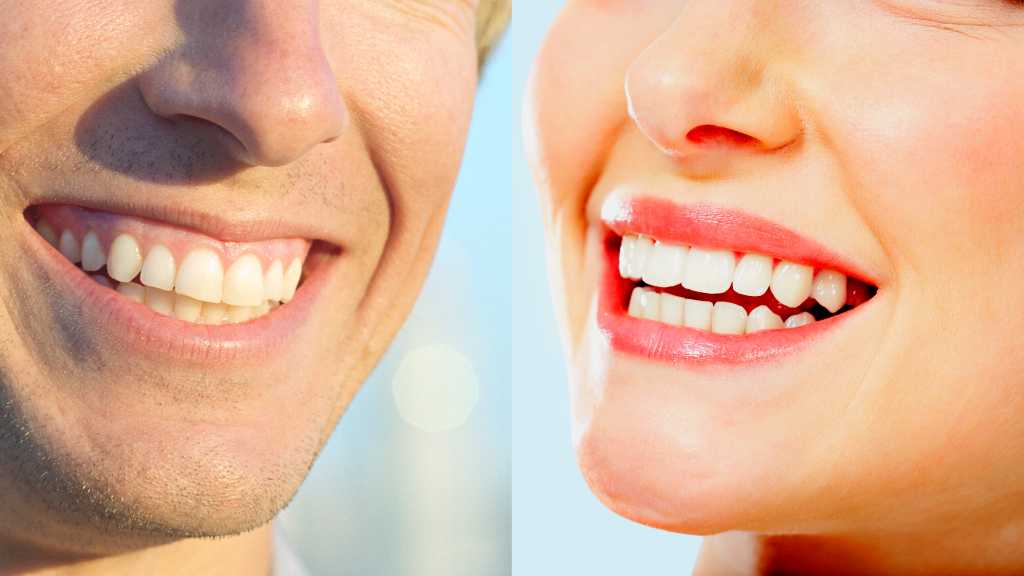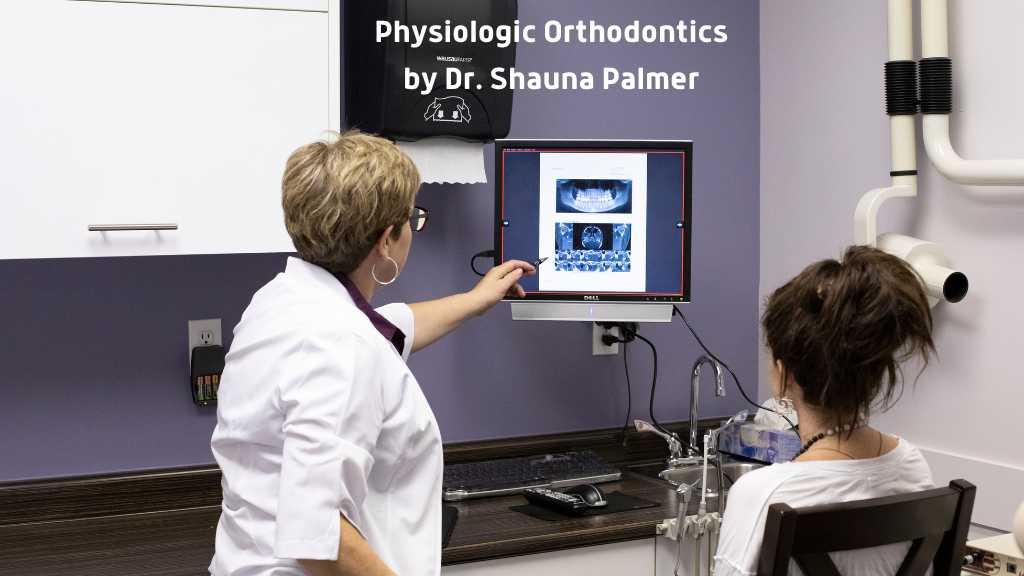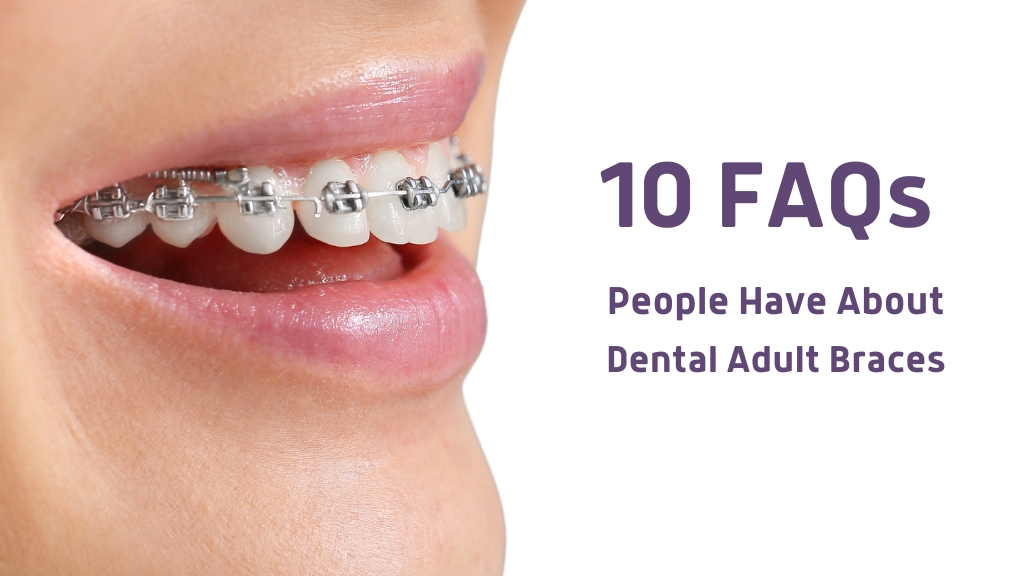Adult braces for healthy, straight teeth!
Dr. Shauna Palmer, Dentist at Health & Beauty Dentistry, West-Kelowna:
“Adult dental braces are becoming more common as people are seeking to improve their dental health and appearance. It is well-known that the technology and materials used in dental braces have advanced significantly, making them more comfortable and less noticeable than in the past. Many adults who may have been hesitant to get braces due to their perceived appearance and discomfort are now more willing to consider them.
There is a growing awareness of the importance of dental health and the benefits of having straight teeth. Many adults understand that having straight teeth can improve not only their appearance but also their overall oral health. Straight teeth are easier to clean, reducing the risk of cavities, gum disease, and other oral health issues.

Today, many adults are choosing to invest in themselves and their self-confidence. Having straight teeth can improve a person’s self-esteem and make them feel more confident in both personal and professional settings.
In addition, orthodontics can solve dental problems that can only be corrected with braces, such as malocclusion or bite issues. As people age, these issues can become more pronounced and lead to other dental health problems. Adult braces can correct these issues and prevent more severe dental problems in the future.
As always, people have many questions before they consider orthodontic treatment. Here are … “
Some of the biggest questions people have about adult braces:
- What are the different types of braces available for adults, and which one is right for me?
- How long will I need to wear braces?
- Will wearing braces affect my daily activities, such as eating and speaking?
- How often will I need to see my orthodontic provider during the treatment process?
- What are the potential risks and side effects of wearing braces?
- How much will braces cost, and will my insurance cover any of the expenses?
- Can I still participate in sports while wearing braces?
- Will wearing braces impact my professional or social life?
- What can I do to care for my teeth and braces properly?
- Will my teeth shift back after the braces are removed, and how can I prevent this from happening?
Dr. Shauna Palmer, Dentist at Health & Beauty Dentistry, West-Kelowna:
“Before answering the 10 questions above, it’s good to know that when it comes to dental adult braces, our motto is: We don’t just straighten your teeth. We have a holistic and comprehensive understanding of your jaw, teeth, facial and cranial structures before any braces are created.
At Health & Beauty Dentistry, we provide Physiologic Orthodontics Therapy. This methodology ensures that once your teeth have been straightened, you don’t experience new problems with bite and jaw alignment. It’s part of our holistic vision.”
What exactly does Physiologic Orthodontics Therapy mean?

Through computerized tomography imaging and the use of other diagnostic technologies, Dr. Palmer can assess the shape, position, and health of your cranial, facial and jaw structures.
Problems to look for are things such as an underdeveloped upper jaw, an underdeveloped bottom jaw, or a bottom jaw that is overgrown (underbites and overbites), jaws that are too narrow, or jaw joints that are compressed or damaged.
Physiologically based orthodontic therapy enables Dr. Palmer to alter the top jaw to the proper size and then she can get the bottom jaw into a relaxed physiologic bite position.
Dr. Shauna Palmer, Dentist at Health & Beauty Dentistry, West-Kelowna:
“Regardless, people have many questions about adult braces. Below, we’ll answer those questions the best we can.”

1. What are the different types of braces available for adults, and which one is right for me?
There are several types of braces available for adults, each with its own benefits and/or drawbacks. The right type of braces for you will depend on your specific dental needs, treatment goals, and personal preferences. Here are some of the most common types of braces:
- Traditional metal braces: These are the most common type of braces, consisting of metal brackets and wires that are glued to the teeth. They are the most affordable option and are effective for treating a wide range of dental issues.
- Ceramic braces: Ceramic braces are similar to metal braces, but the brackets are made of tooth-coloured or clear materials, making them less noticeable. They are a good option for those who want a less noticeable option but require more significant correction than aligner trays can provide.
- Self-ligating braces: Self-ligating braces are similar to traditional braces, but they use a specialized clip instead of elastic bands to hold the wire in place. They are more comfortable than traditional braces and require fewer adjustments.
- Clear aligner trays: Clear aligner trays, are a series of clear plastic trays that gradually shift the teeth into alignment. They are virtually invisible and can be removed for eating and cleaning. NOTE: Clear aligner trays cannot be used in cases of physiologic orthodontics where jaw alignment is crucial. Clear Aligners are more for mild cosmetic corrections.
It’s important to know that only a personalized consult can determine the best type of braces for your individual needs. It all depends on the severity of your dental issues, treatment goals, and personal preferences to recommend the best option for you.
2. How long will I need to wear braces?
The length of time you will need to wear dental braces depends on several factors, including the level of your dental issues, the type of braces you choose, and your adherence to your dentist’s or orthodontist’s instructions. Failure to do so can prolong the treatment time and impact the final results. On average, most people wear braces for 18 to 36 months.
3. Will wearing braces affect my daily activities, such as eating and speaking?
The extent of the impact on eating and speaking will depend on the type of braces you have and how well you adjust to them.
With all dental braces, there may be some discomfort or soreness in the first few days after they are placed. It may take a few days or weeks to adjust to eating with them, but most people can eat normally after the initial adjustment period. However, it is recommended that you avoid hard, sticky, and chewy foods that could damage your braces. Speaking may also take some getting used to, as the metal brackets and wires can affect how the tongue and lips move. However, most people adjust to speaking with braces within a few days.
4. How often will I need to see my dentist/orthodontist during the treatment process?
The frequency of orthodontic appointments during the treatment process will depend on the type of braces you have and the severity of your dental issues. On average, most people will need to see their dentist/orthodontist every four to eight weeks.
During these appointments, your dentist/orthodontist will check the progress of your treatment, adjust your braces, and monitor your oral health.
It’s important to attend all scheduled appointments to ensure that your treatment stays on track and to identify any issues that may arise. Missing appointments can prolong your treatment time and impact the final results.
5. What are the potential risks and side effects of wearing braces?
Wearing braces could have some potential risks and side effects, although most are minor and easily managed. Some of the potential risks and side effects of wearing braces include:
- Discomfort or soreness: When the braces are first placed, or after adjustments, you may experience some discomfort or soreness in the teeth or soft tissues. Over-the-counter pain relievers can help manage this.
- Damage to braces: Hard or sticky foods can damage the braces or wires, and in some rare cases, the teeth themselves.
- Allergic reactions: Some people may have an allergic reaction to the metal in your braces. In these cases, ceramic or plastic brackets may be a better option.
- Cavities or gum issues: If the patient isn’t diligent with their personal care and cleaning of teeth, these problems can occur.
In general,the risks and side effects of wearing braces are minor and can be easily managed with proper care and attention.
6. How much will braces cost, and will my insurance cover any of the expenses?
The cost of braces can vary widely depending on the type of braces you choose, the severity of your individual dental issues, and your location. Therefore, providing ‘average’ pricing is impossible.
Many dental insurance plans cover a portion of the cost of adult braces. Adult orthodontic coverage varies widely among insurance plans, so it’s important to check with your insurance provider to determine what if any, coverage is available.
In addition to insurance, there are also options to finance your braces. There are several third-party financing companies that specialize in financing medical expenses, including orthodontic treatment.
Ultimately, the cost of braces is an investment in your dental health and overall well-being. It’s important to consider the potential long-term benefits when making the decision to pursue orthodontic treatment.
7. Can I still participate in sports while wearing braces?
Yes, you can still participate in sports while wearing braces, but it’s important to take precautions to protect your braces and teeth from damage.
If you participate in contact sports, such as football or hockey, it’s essential to wear a mouthguard to protect your teeth and braces from impact. Your dentist/orthodontist can provide you with a custom-fitted mouthguard that will fit over your braces and provide the best protection. It’s important to wear the mouthguard during practices and games to prevent damage to your teeth and braces.
For non-contact sports, such as swimming or track and field, you can continue to participate while wearing braces. However, it’s still important to be mindful of the potential impact on your braces and to avoid any activities that could damage them, such as biting down on hard objects or using your teeth to open packages.
8. Will wearing braces impact my professional or social life?
While wearing braces may have some impact on your professional or social life, the long-term benefits oforthodontic treatment typically outweigh any temporary discomfort or inconvenience. In the end, a healthy, confident smile is an investment in your overall well-being and self-esteem
Adult braces are becoming more common among adults, and many workplaces are accepting of orthodontic treatment. If you have concerns about your braces impacting your professional life, talk to your employer or colleagues to alleviate any concerns they may have.
9. What can I do to care for my teeth and braces properly?
Caring for your teeth and braces properly is essential to ensuring the success of your orthodontic treatment and maintaining good oral health. Here are some tips to help you care for your teeth and braces properly:
1. Brush regularly
2. Floss and/or water floss daily
3. Avoid hard and sticky foods
4. Use orthodontic wax
5. Attend regular dentist/orthodontic appointments
By following these tips, you can help ensure that your braces are effective, and that your teeth remain healthy and strong.
10. Will my teeth shift back after the braces are removed, and how can I prevent this from happening?
With traditional methodologies, after your braces are removed, your teeth could shift back to their original position. This is because the bone and ligaments surrounding your teeth need time to adjust to their new position, and they may try to move the teeth back to their original position.
This is where Dr. Palmer’s Physiologic Orthodontics comes in again. Her methodology ensures that once your teeth have been straightened, you don’t experience new problems with bite and jaw alignment. A custom-made retainer is made which prevents teeth shifting, keeps the jaw in a relaxed position and helps open the airway.
West Kelowna Dentist Dr. Shauna Palmer has been practicing a physiologic approach to dentistry since 2000 and is still involved in ongoing training in balancing the teeth, jaw muscles, jaw joints, facial structure, and body posture & aesthetics or cosmetics in all dental treatments, and especially when creating dental braces for her patients.
Are you interested in a truly effective, holistic and healthy process to straighten your teeth?
Make an appointment today!

